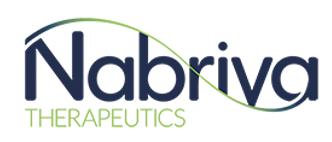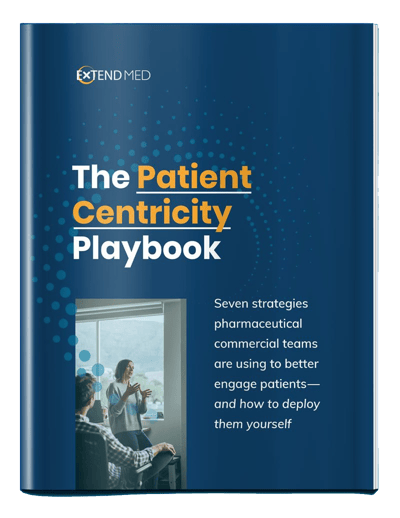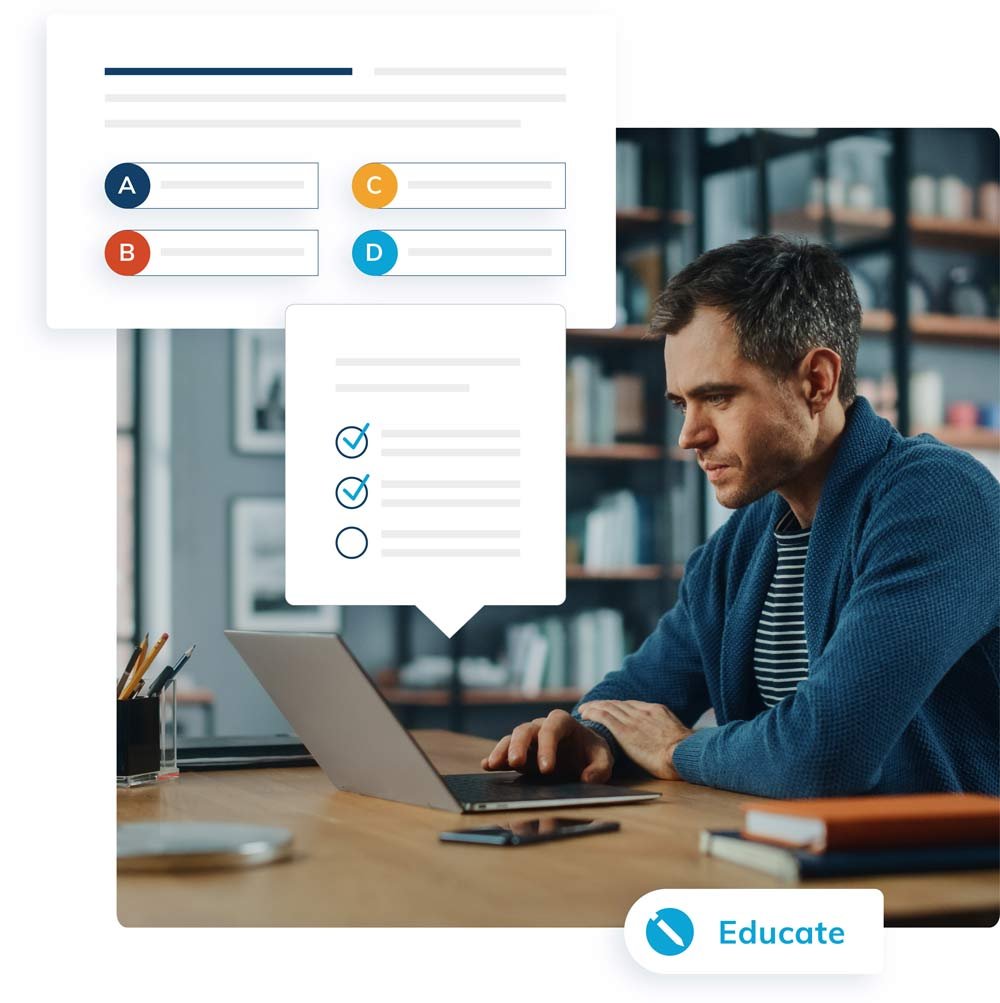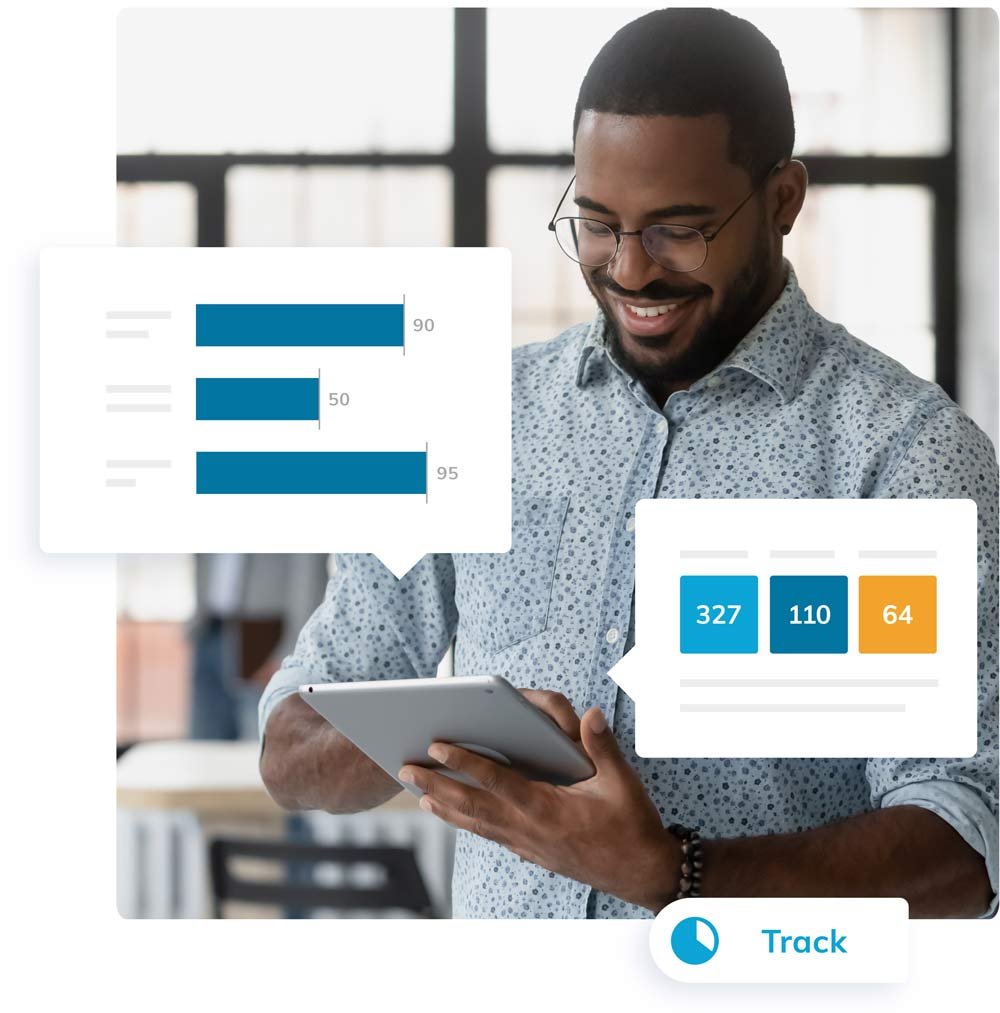📄 Download our free white paper
The Patient Centricity Playbook
Seven strategies pharmaceutical commercial teams are using to better engage patients—and how to deploy them yourself
Patient centricity has long been a topic of discussion across the life science and broader healthcare industry. Now, having spent decades talking about what it means and how it could work, leaders find themselves amid a patient-centered care revolution—a movement that’s only accelerated as regulatory and consumer pressures push and pull on organizations to demonstrate real progress.
This paper brings patient centricity down to earth and into the modern pharmaceutical organization. We offer a functional definition of the concept that much of the industry appears to be coalescing around and a series of practical steps commercial teams can take to incorporate patient engagement into their existing tactical plans and workflows. It's essential reading for anyone looking for actionable ways to put patient centricity into practice today.







Download the white paper.
Submit the form below and access the free white paper. We'll also send a copy right to your inbox. And don't worry—we take privacy as seriously as you do.
Get your free copy.
Learn the challenges keeping commercial teams from putting patient centricity into practice.
- Countering the traditional healthcare system, which has routinely overlooked and devalued patient involvement in decision-making
- Operating without a standard system for implementing patient-centric practices
- Preventing efforts from being siloed within a particular department (frequently the commercial arm alone)
- Resisting a rigid adherence to FDA’s guidance
- Countering a lack of will to challenge decision-makers’ assumptions that they already know everything they needed to know about patients
- Overcoming often paralyzing concerns and pushback among decision-makers regarding data privacy and compliance
- Resisting the urge to shelve patient centricity initiatives for later citing convenient albeit imprecise excuses such as “changing priorities and limited resources”
Get seven “plays” you can run to achieve greater patient centricity.
The key to pushing change across the organization may lie in tying initiatives to objectives and measurable outcomes to convince decision-makers that patient centricity is worth their time and attention.
Commercial departments must integrate patient centricity into their processes and demonstrate that the value of patient input is equally valuable to that of different stakeholders.
This, by itself, can be challenging since patient centricity looks different for every organization. There is no universal procedure all teams can follow. However, we identify seven general steps, which can be adapted to fit almost any organization, as a set of starting points your team may be able to use as a template for tailoring its own patient engagement strategy.
We hope this paper also helps you develop strategies for campaigning for change internally if this represents an initial challenge.
See a sample of our best practices.
1. Open a patient engagement channel in your tactical plan
The first step to engaging with patients is opening a dedicated, two-way communication channel to facilitate that engagement. With the right technology platform—one that serves as a centralized venue for synchronous (real-time) and asynchronous communications—commercial teams can motivate patients to participate in discussions without imposing burdensome or unfamiliar technologies.
Patients can engage in ways they’re accustomed to, whether it’s a video conference, message board, or survey.
On the back-end, dedicated stakeholder engagement platforms can gather, analyze, and distill patient perspectives into actionable insights teams can clearly understand and put to use.
Such a platform also provides the team with an outlet for a series of engagements with patients.

2. Identify the right patient groups and invite them into the process
Once you’ve established a channel for engaging patients, you can identify communities of interest to engage. The optimal size of a patient community typically lands somewhere between 10 and 25 individuals.
In doing this, it’s crucial to align your selection of groups with specific objectives dictated by the task at hand.
For example, if your objective is to look at treatment plans, finding patients who have already received treatment and progressed to the stage in the disease you are interested in would be a sensible strategy.
On the other hand, you want to ensure you diversify your group to incorporate different points of view.
Engaging with patients with different experiences, opinions, or complications related to a secondary diagnosis or secondary disease, for example, could provide a far richer and more inclusive set of insights.

3. Establish criticality and build trust with individuals
Conveying the importance of patients’ perspectives is vital for motivating their participation and generating the best possible results. Telling patients about your objectives in soliciting their input can go a long way in building trust, creating a supportive environment, and encouraging them to open up about experiences and facets of life that require a level of vulnerability and honesty that doesn’t come easy.
Another factor to consider is transparency in data usage.
As Deloitte’s researchers note, it’s critical to demonstrate to both patients and stakeholders the benefits of sharing patient data for use in healthcare research, as 61% of US consumers are not willing “to share their blinded data with organizations that conduct health care research” (Betts and Korenda via Deloitte).
The authors of this research note that to accomplish this, companies need to have clear policies on how to do so.

At Ultragenyx, we understand the importance of incorporating the perspectives and needs of patients, caregivers, and advocates into each stage of drug development, systematically. By doing so, as a company, we can be confident that our programs are designed to meet the community’s needs.

Belen Gonzalez Sutil, MA
Associate Director, Patient Advocacy, UltragenyxWhile there is never one unified patient voice, engaging and empowering patient advisors who represent a multitude of backgrounds and life experiences are critical throughout the drug development trajectory. People with first-hand experience with cancer treatment are ‘experts’ in their own right; providing valuable feedback on their perceptions, expectations, and real-world issues with treatment regimens, side effect management, navigating the healthcare system, quality of life, and overall health and well-being.

Vicki Kennedy, LCSW, FAPOS, FAOSW
Executive Director, Oncology Strategy & Patient Engagement, Cullari Communications GlobalYour playbook to better patient engagement.
Use the "plays" as the starting point for your own patient centricity program.

How long are you going to wait to put patient centricity into practice?
Submit the form below and access the free white paper. We'll also send a copy right to your inbox. And don't worry—we take privacy as seriously as you do.
Get your free copy.
©2025 ExtendMed. All rights reserved. Privacy Policy